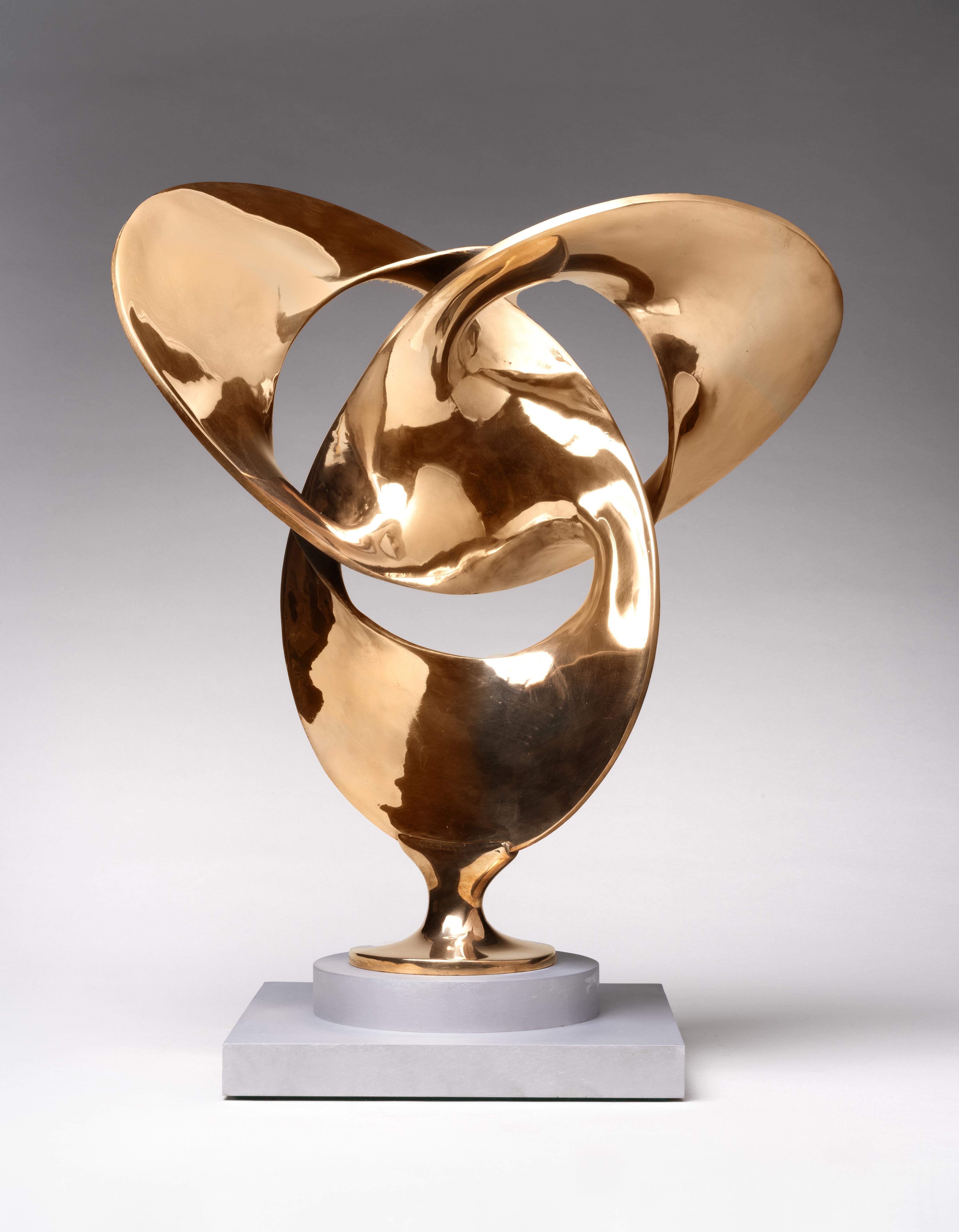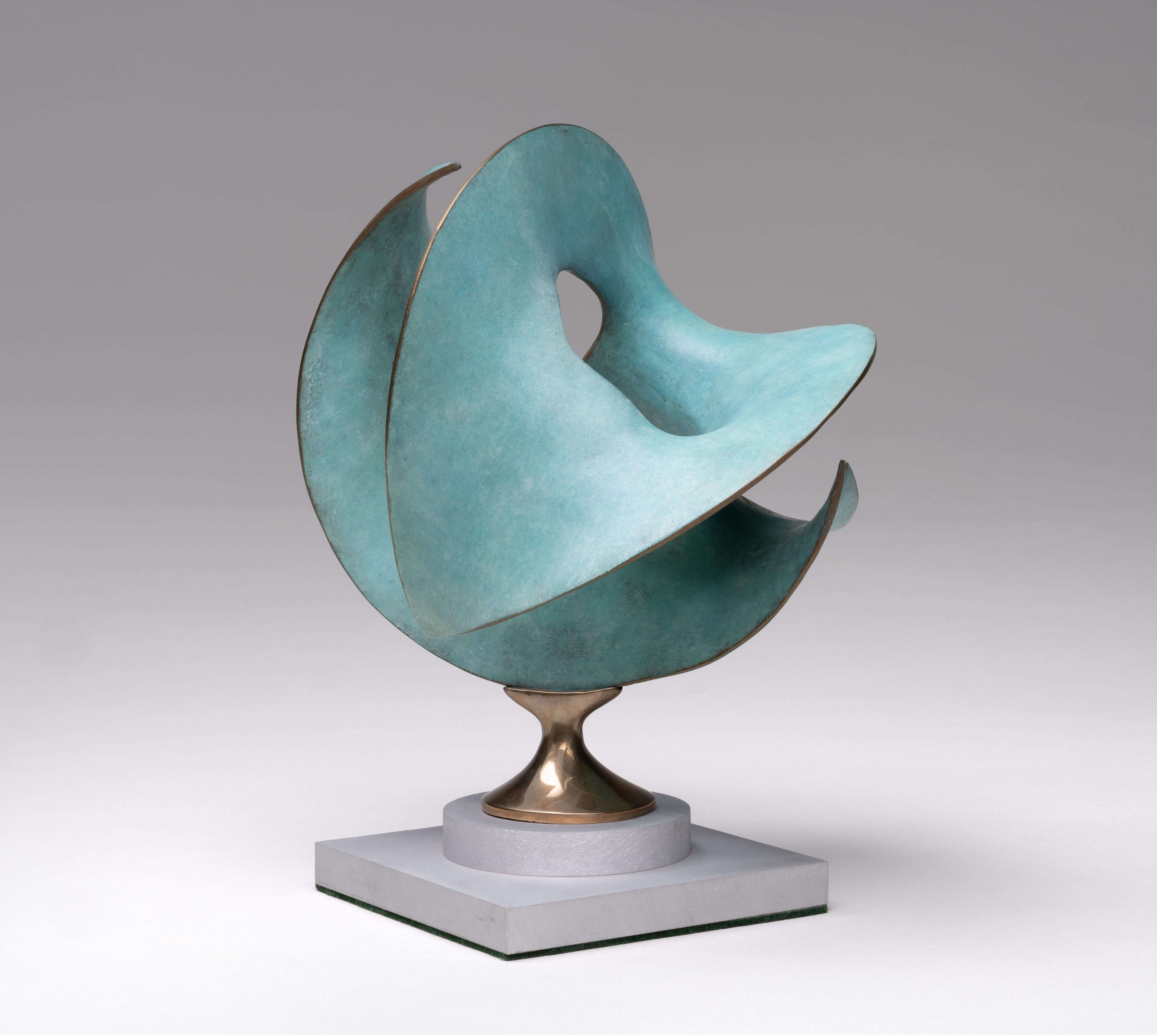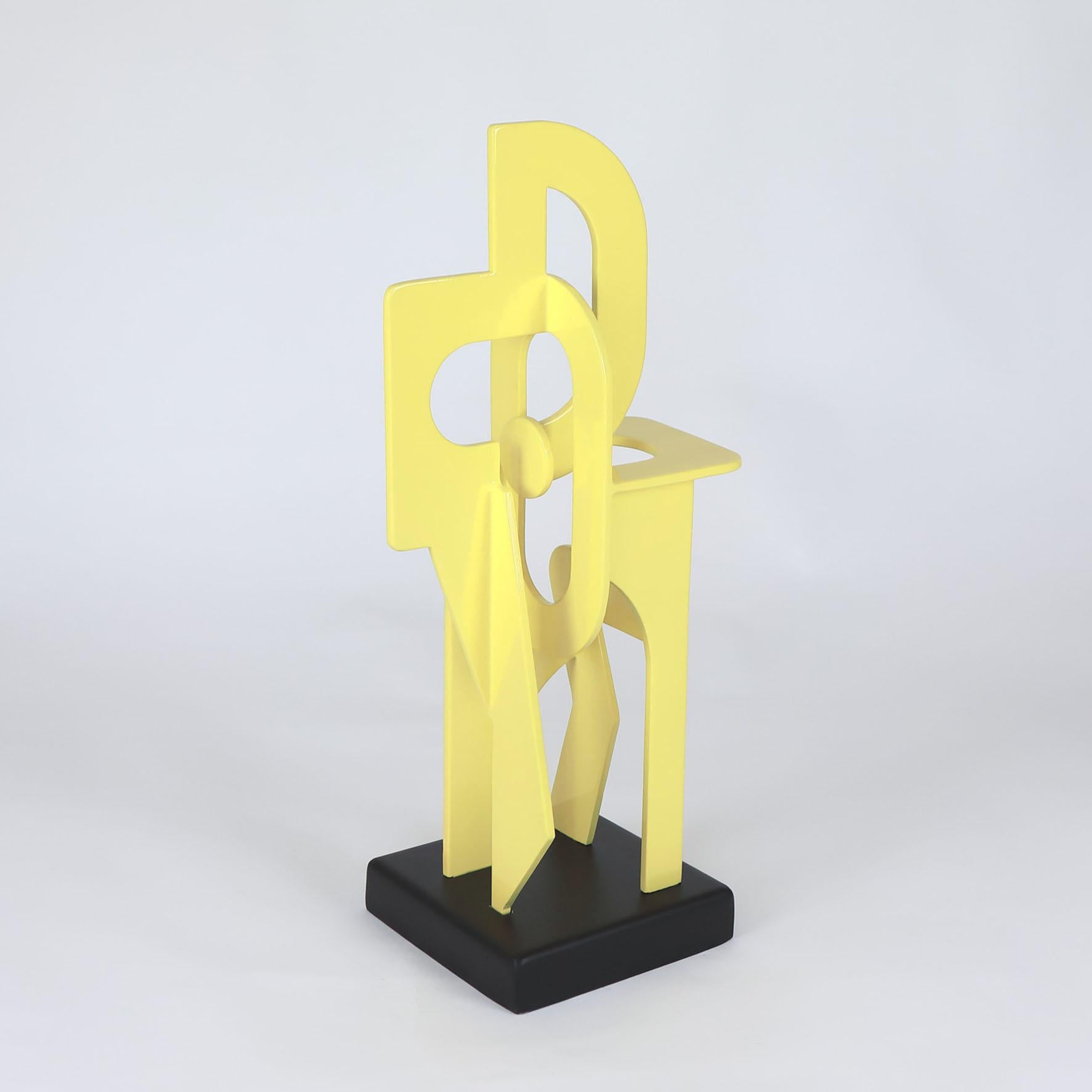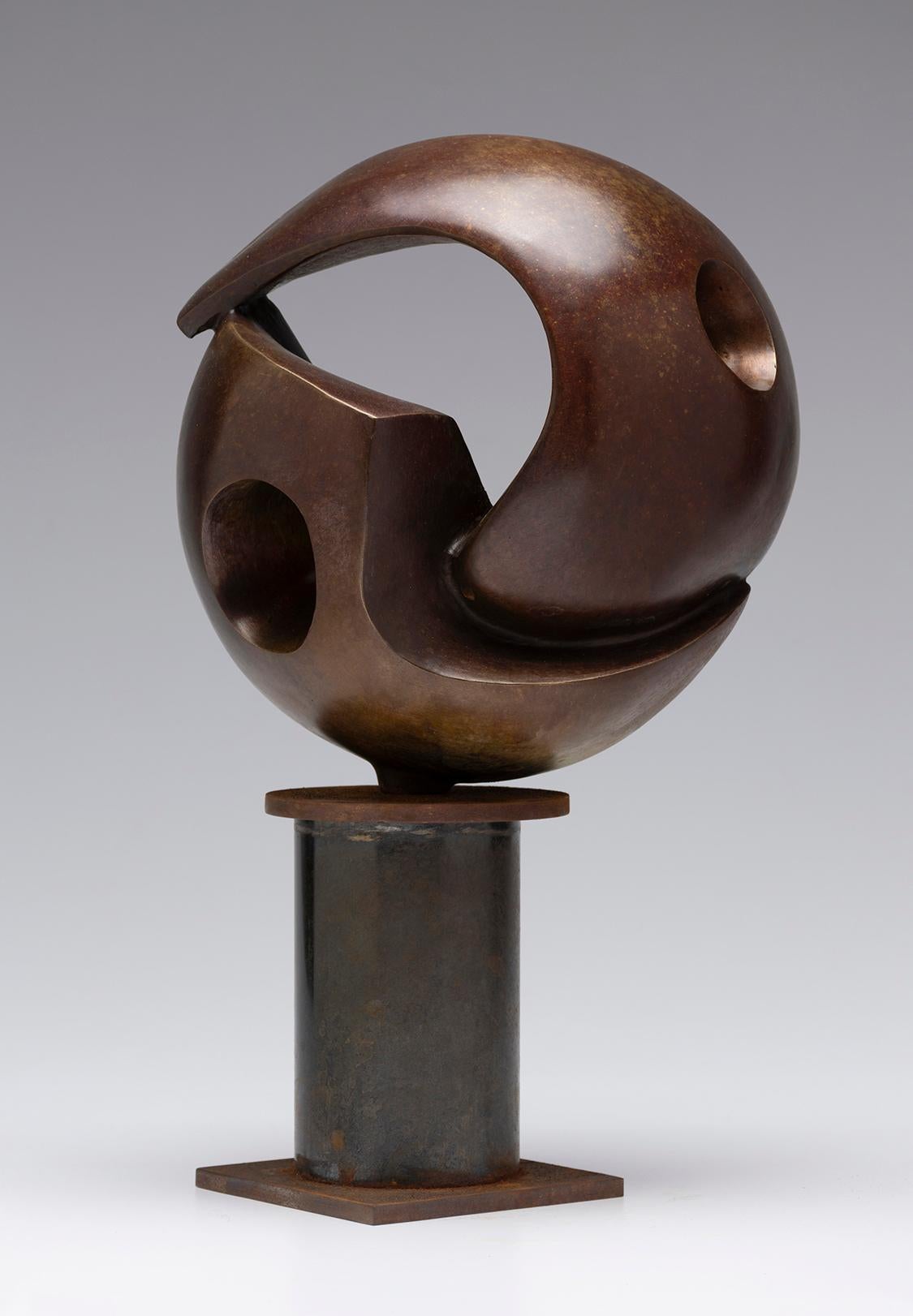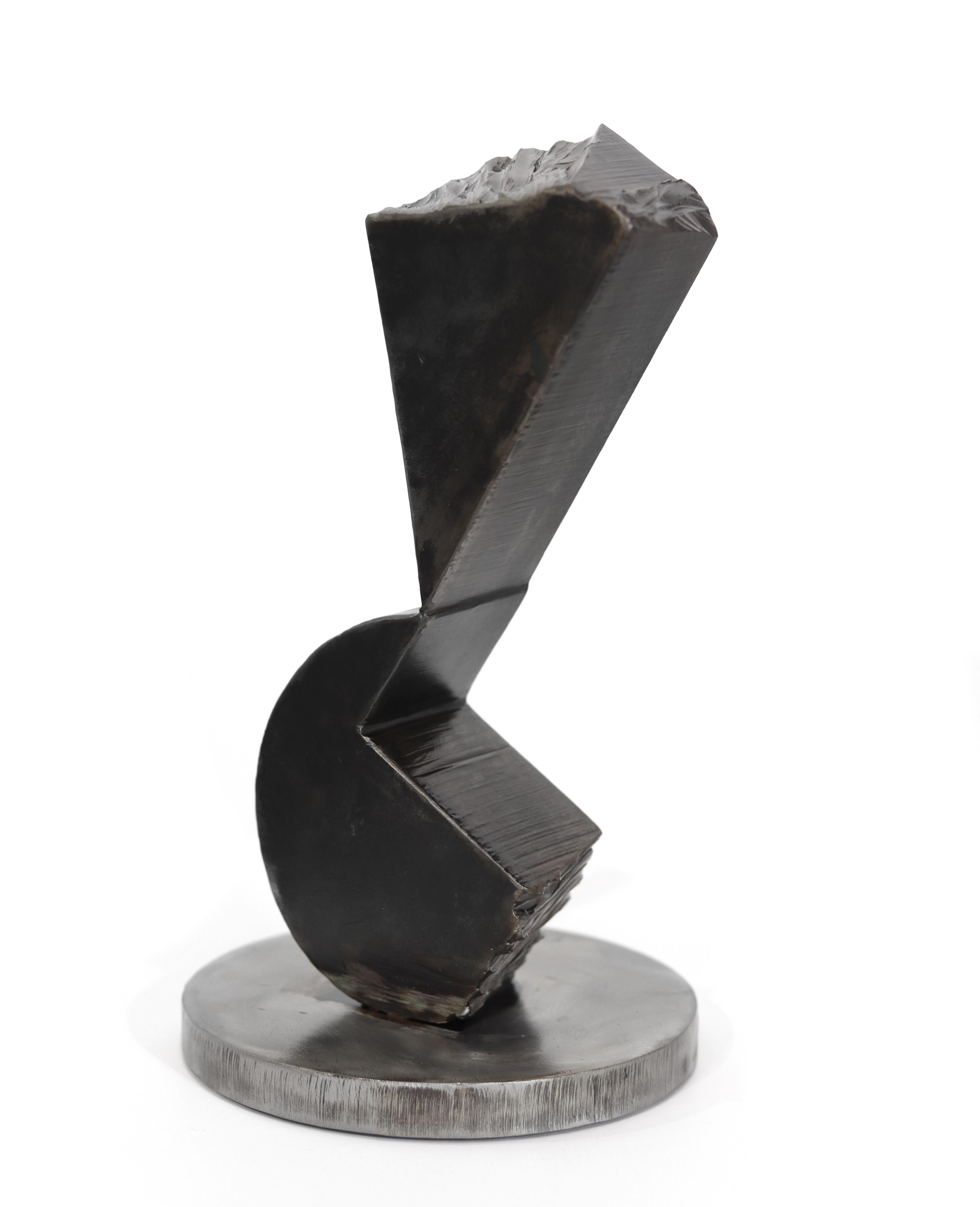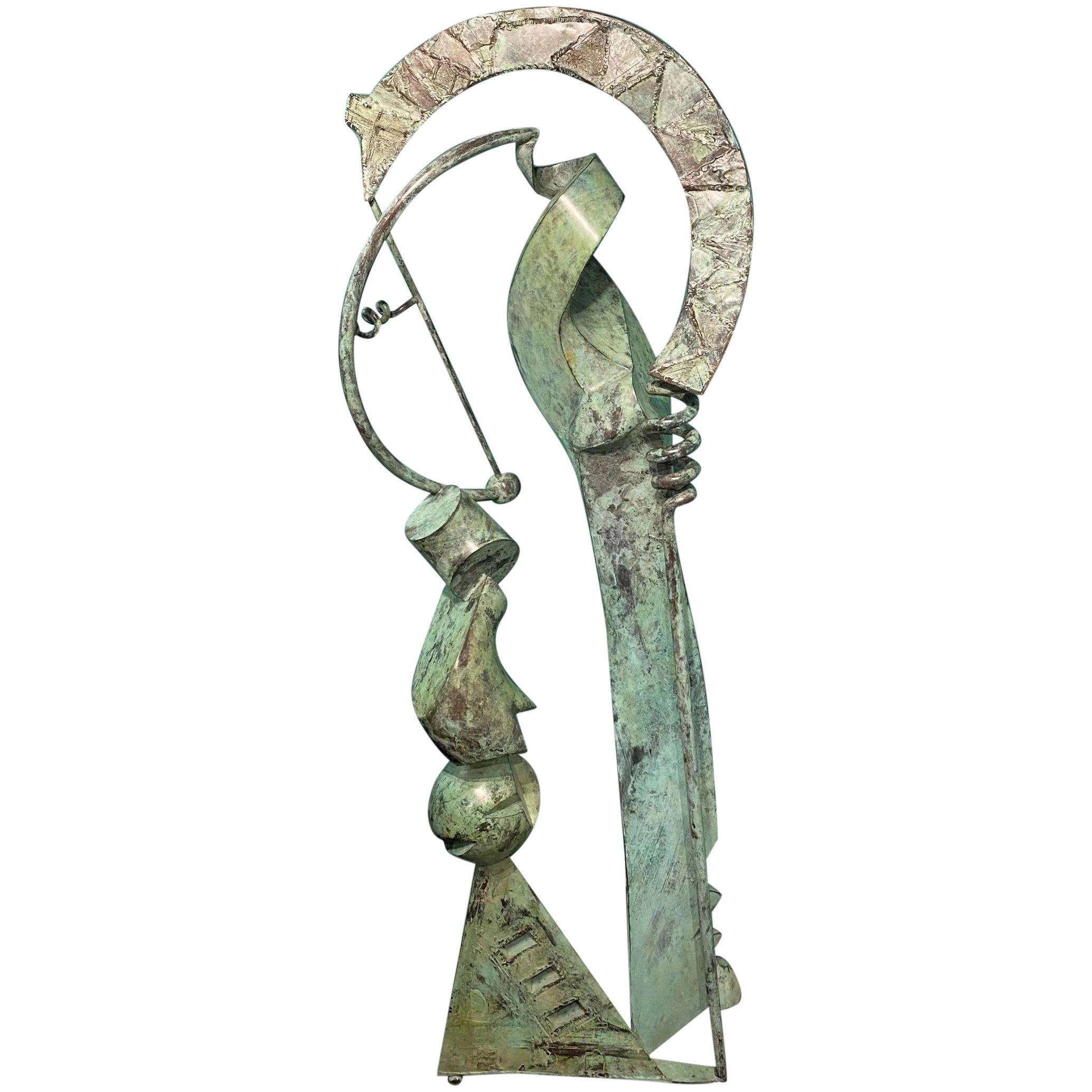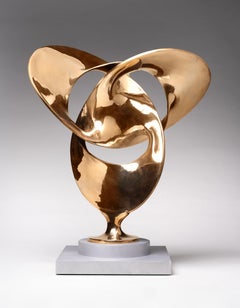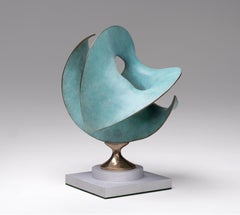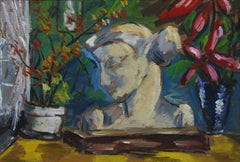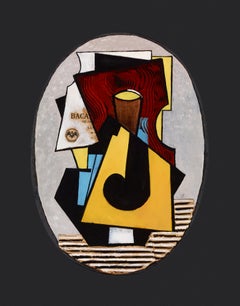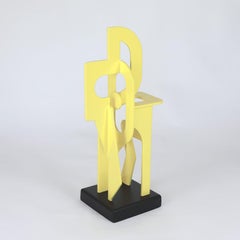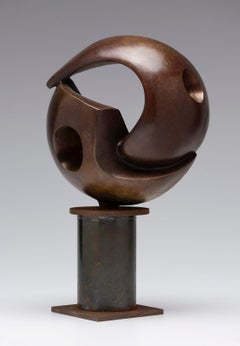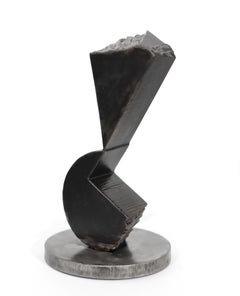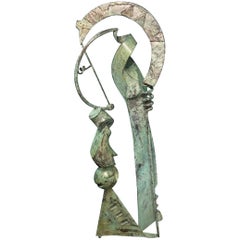Items Similar to Two Squares, Variation 5
Want more images or videos?
Request additional images or videos from the seller
1 of 5
Robert EngmanTwo Squares, Variation 5
$7,500
£5,734.20
€6,569.90
CA$10,578.80
A$11,517.62
CHF 6,150.04
MX$139,035.69
NOK 77,317.02
SEK 71,913.83
DKK 49,073.99
About the Item
Two Squares, Variation 5
Bronze
6 3/4 x 5 x 5 inches
Stamped on base: Engman
Edition 4/25
Robert M. Engman (April 29, 1927-July 4, 2018) was an American sculptor who worked primarily with metal, and is known for his explorations of minimal surfaces to generate sculptural form. He was born in Belmont, Massachusetts to Swedish immigrants Ranghild and Edward, and was the youngest of two. His older brother, Edward, was three years his senior. When Engman was two years old, his father died suddenly due to an accident. In 1930, his mother married again to Conrad Olsen, a blacksmith and toolmaker in their Swedish community, and together they had two daughters, Constance and Virginia.
Despite being a bright, energetic, and creative student, Engman struggled to focus in school, likely due to undiagnosed dyslexia. In 1942, in the midst of World War II, he dropped out of high school at the age of fifteen and joined the Navy, forging a birth certificate in order to enlist. After he was discharged in 1946, his stepfather Conrad secured him a job as a punch press operator for the United-Carr Fastener Company in Cambridge, Massachusetts. He strongly disliked the work but did not yet know which career he wished to pursue. His older brother Edward, a gifted artist, was a student at the Rhode Island School of Design (RISD) and encouraged Robert to apply. Though attempting several times to earn his high school diploma after returning from the navy, he was ultimately unsuccessful because of the same learning difficulties that plagued him previously.
Finally, in early 1948, he approached the Chair of the Fine Arts department at RISD, John Frazier, and asked for a one-month trial period to prove his potential as an artist. Frazier agreed, and during that period Engman showed an inherent talent and strong, almost desperate desire to succeed. This resulted in his being fully accepted to the school and he went on to earn a BFA in Painting. In 1951, in the midst of his studies, Engman married Margaret Nyberg, a fellow RISD student with whom he would go on to have three daughters: Kerstin, Allyn, and Bevin.
At the end of his undergraduate degree, Engman wished to continue his study of painting under the direction of Josef Albers, the esteemed abstract painter and teacher who was then the head of the Design department at Yale University’s School of Art. Albers was not particularly impressed with Engman’s paintings but felt he was an able draftsman with potential for future artistic growth, and thus admitted him for graduate study. Albers emphasized to all his students the importance of finding their own personal way in the discipline. Engman earned a MFA in Painting and Sculpture from Yale, but Albers discerned that his real talents lay in three dimensional work. He encouraged Engman to work with sculptor José de Rivera, also at Yale, but Engman still struggled to find the path that would be distinctively his.
It all came down to the summer after his graduation from the MFA in 1955. This is how Engman described that period:
“Albers had left for Germany and I was desperate, working alone at Yale in the basement of Street Hall. I tried to simplify my approach and thought, what would happen if I simply bent this thing, and if I bent it, what would happen if I bent another one just like it and stuck them together? It wasn’t a question of thinking of forms as much as it was a consequence of the process.
I took a sheet of brass that was ¼ inch thick and about a foot square. I started to hammer the edges which spread the metal as it struck it. I continued hammering about ¼ inch each row all the way around, which warped the sheet because the hammering had increased the surface area along the edge. Gradually the two opposing corners of the sheet came up and touched, and a new form was created.
When Albers returned from Germany at the end of the summer, he asked me if I had done any work and I showed him the piece. He seemed very pleased at what he saw and said, ‘Now you are on your way.’” With this encouragement, Engman took the essence of the new form and made numerous variations on that theme, including First Piece, which he later renamed Moon. He drew upon a familiarity of working with metal learned from his stepfather in his youth, and the resulting works show a fascination with warped surfaces that he often took to lens-like polished finishes.
His first solo show in 1956 sold out in advance and took place at the Stable Gallery, which would host Andy Warhol’s first solo show six years later. Albers wrote the introduction to the catalog for the debut show, saying of Engman:
“Evolution follows the rule of action-reaction or action-counteraction. Thus, centuries of predominantly voluminous sculpture are being confronted today by a strong trend toward linear sculpture, toward sculpture combined and constructed . . . But finally, a few independent ones–only a few in sculpture, as a few in architecture were courageous enough to concentrate on the plane–the in-between of volume and line – as a broad sculptural concept and promise. It is a promise, truly new and truly exciting: Structural Sculpture, because it traverses continually the separation of two and three dimensions.”
Much success and attention followed Engman’s first few exhibitions. Starting from his debut and continuing through the 1960s and 70s, Engman was a very active figure in the East Coast art gallery scene, mostly appearing in New York City.
One year preceding Engman’s debut, Albers asked him, alongside Jose de Rivera, to run the newly formed sculpture department at Yale. Albers then retired from teaching in 1960, and Engman spent several years engaged in creating sculpture and teaching students. While at Yale, he was awarded the John Boit Morse Memorial Traveling Fellowship, a funded opportunity intended to support chosen individuals with the goal of expanding their knowledge through international independent study and research in the fine arts. Engman and his family at first traveled to Scandinavia but subsequently spent the majority of the two years of the fellowship living in Florence, Italy. Speaking later of that time, he described how his eyes were opened to the magnificent artistic offerings of the Renaissance. During his time in Florence, he made 105 plaster molds about one inch high, which were ultimately cast in bronze by the famous foundryman Brunello.
While he and his family were abroad, Engman was approached by Holmes Perkins, former Harvard professor and newly-appointed Dean of the Graduate School of Fine Arts at the University of Pennsylvania. Perkins offered for him to come to Philadelphia and start a sculpture program at the university. Engman accepted, and returned to the United States in 1964 to begin teaching at Penn. From 1965 to 1983, he served as co-Chair of the Fine Arts department and also as Chair of the Graduate Studies program in Sculpture, a position that he held until his retirement in 1992. During his tenure at Penn, he and his wife Margaret divorced and in 1980, he married Nancy Porter, with whom he had two children, Kelsey and Anders.
Over the course of his career in Philadelphia, Engman produced a number of large commissions, the largest of which was Triune, a twenty-six-foot tall, fifteen-ton sculpture that still stands at the southwest corner of City Hall Plaza in downtown Philadelphia. It was commissioned in 1974 by the Girard Bank, the Fidelity Mutual Insurance Company, and the City of Philadelphia. The piece took eighteen months to create and its production was plagued by issues, most notably that the foundry that cast the piece did not cool it properly, which resulted in unexpected warping and required a prolonged effort to correct the mistakes. Also notable is his sculpture created in honor of famed Indian yoga teacher and friend B.K.S Iyengar: After Iyengar (1978). Engman created the piece to commemorate the yogi’s 1976 visit to the United States and to pay tribute to Iyengar’s “balance and strength.”
It was around this time that Engman decided to move away from making large pieces, as in his mind they took too much time. Following his retirement in 1992, he also gradually withdrew from being active in the gallery scene. For the remaining twenty-two years in which he sculpted, he preferred to produce small pieces that expressed his many sculptural ideas. This ultimately resulted in a consummate series of fifty-two pieces, forms which spanned the various design sensibilities and experiments of his entire career.
In 2016 the Michener Museum in Doylestown, Pennsylvania gave an expansive retrospective exhibition of his work. Fifty-two small pieces generously loaned for the exhibit by his foundation and a private collection, were on display along with other iconic works from throughout his career. His studio in Haverford, Pennsylvania was the spot he most loved to be, and there he continued to work on small pieces until a few years before his death in 2018. Today, his work can be found in the permanent collection of the Hirshhorn Museum, the Michener Art Museum, MOMA, the Whitney Museum of American Art, numerous college museums, outside of City Hall in Philadelphia, in the Morris Arboretum, and in private collections.
© Nancy Porter and Rachel Ruisard
- Creator:Robert Engman (1929 - 2018, American)
- Dimensions:Height: 6.75 in (17.15 cm)Width: 5 in (12.7 cm)Depth: 5 in (12.7 cm)
- Medium:
- Movement & Style:
- Period:
- Condition:
- Gallery Location:Bryn Mawr, PA
- Reference Number:1stDibs: LU2773216981432
About the Seller
5.0
Recognized Seller
These prestigious sellers are industry leaders and represent the highest echelon for item quality and design.
Platinum Seller
Premium sellers with a 4.7+ rating and 24-hour response times
Established in 2001
1stDibs seller since 2024
6 sales on 1stDibs
Typical response time: <1 hour
- ShippingRetrieving quote...Shipping from: Bryn Mawr, PA
- Return Policy
More From This Seller
View AllTriune
Located in Bryn Mawr, PA
Triune
Bronze
18 3/4 x 14 x 12 inches
Stamped on base: Engman
Edition 3 of 13
Robert M. Engman (April 29, 1927-July 4, 2018) was an American sculptor who worked primarily with metal...
Category
Late 20th Century Abstract Geometric Abstract Sculptures
Materials
Bronze
$22,000
Crescents, Variation 2
Located in Bryn Mawr, PA
Crescents, Variation 2
Bronze
9 x 7 x 7 inches
Stamped on base: Engman
Robert M. Engman (April 29, 1927-July 4, 2018) was an American sculptor who worked primarily with metal, and i...
Category
Late 20th Century Abstract Geometric Abstract Sculptures
Materials
Bronze
Still Life with Robert Laurent Sculpture
Located in Bryn Mawr, PA
Born in New York City, modernist painter Adelaide Lawson Gaylor studied at the Art Students League and with Kenneth Hayes Miller. She was a member of the Society of Independent Artists, the Salons of America, and the New York Society of Women Artists. She was married to artist Wood Gaylor...
Category
1920s American Modern Still-life Paintings
Materials
Oil, Board
Composition, 1940–42
By Suzy Frelinghuysen
Located in Bryn Mawr, PA
Frelinghuysen Morris Foundation;
Valerie Carberry Gallery, Chicago, Illinois
Private collection until 2022
Suzy Frelinghuysen was born into a wealthy and prominent New Jersey family, and growing up, she was tutored in both art and music. While she showed an early talent for art, it was not her primary interest; as a child, she nurtured an nambition to become a professional singer. In 1935, she married George Morris, who came from an equally wealthy and distinguished New York family and had already established himself as an art collector, artist, and critic. Morris encouraged Frelinghuysen to paint and introduced her to a circle of affluent abstract artists, including the artist and collector Albert Gallatin. Gallatin owned a small but influential gallery, known as the Gallery of Living Art...
Category
Mid-20th Century Cubist Abstract Paintings
Materials
Masonite, Paper, Oil
04-14
Located in Bryn Mawr, PA
04–14, 2016
Oil on canvas, 36 x 42 inches (91.4 x 106.7 cm)
Signed and dated on verso: Madeline Peckenpaugh / 2016
Provenance
The artist;
Private collection, Haverford
Madeline Pec...
Category
2010s Contemporary Abstract Paintings
Materials
Canvas, Oil
$6,000 Sale Price
20% Off
Figure with Guitar II
By Henry Fitch Taylor
Located in Bryn Mawr, PA
Provenance
Noah Goldowsky Gallery, New York;
Collection of Jeptha H. Wade and Emily Vanderbilt Wade, Boston, until 2025
Exhibitions
Cleveland Museum of Art, Art for Collectors, 1971...
Category
1910s American Modern Abstract Paintings
Materials
Canvas, Oil
You May Also Like
"Ref.326" by Nicolas Dubreuille, 25 x 11 x 7 in, 2020
By Nicolas Dubreuille
Located in Paris, France
Nicolas Dubreuille is a multi-faceted abstract artist who likes to multiply mediums - sculpture, painting, drawing, photography - to explore form and colour.
Nicolas Dubreuille's wo...
Category
2010s Abstract Geometric Abstract Sculptures
Materials
Other Medium
Coalesced Series Number Four
By Mike Cunningham
Located in Dallas, TX
This sculpture is edition 2/20
Category
2010s Abstract Abstract Sculptures
Materials
Bronze
Noteworthy - Original Contemporary Expressive Geometric Abstract Metal Sculpture
By Granville Beals
Located in Los Angeles, CA
Inspired by dance and weightlessness, Granville Beals' industrial metal sculptures are primarily about relationships. Concerned with form and abstraction, he does not merely manipula...
Category
21st Century and Contemporary Abstract Abstract Sculptures
Materials
Metal, Steel
Modernist Abstract Sculpture
Located in Milford, NH
A wonderful large modernist abstract bronze sculpture with geometric shapes by American artist Rodger Allen Mack (1938-2002). Mack was born in Barberton, Ohio, graduated from the Cle...
Category
20th Century Abstract Expressionist Abstract Sculptures
Materials
Bronze
Coalesced Series Number One
By Mike Cunningham
Located in Dallas, TX
This sculpture is edition 2/20
Category
2010s Contemporary Abstract Sculptures
Materials
Bronze
Untitled abstraction
By Bill Barrett
Located in New York, NY
Bill Barrett is one of today’s foremost sculptors, exhibiting his unique metal and bronze sculptures in numerous exhibitions since the mid 1960’s. Barrett’s sculptures are predicate...
Category
2010s Abstract Abstract Sculptures
Materials
Bronze
